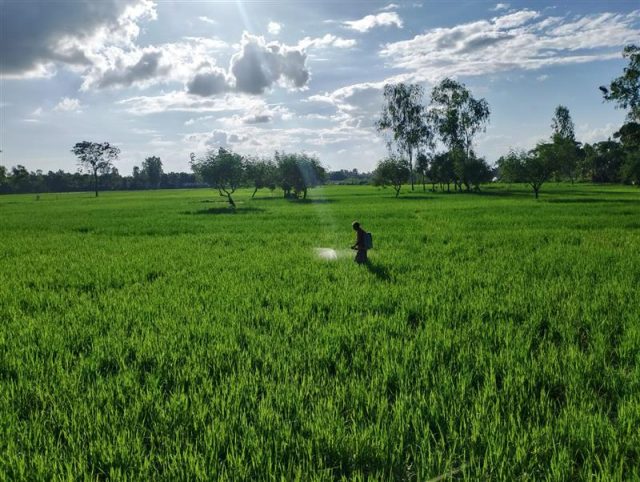Adoption and performance of direct-seeded rice technology in the Philippines
- From
-
Published on
27.02.23
- Impact Area

Rice is one of the major food cash crops in the Philippines, yet the cost of producing it in the country remains higher than the other top rice-producing countries in Southeast Asia. Labor cost is the top contributor to the rice production cost in the Philippines. DSR can reduce labor requirements by up to 50% depending on the production system.
Rice is one of the major food cash crops in the Philippines, yet the cost of producing it in the country remains higher than the other top rice-producing countries in Southeast Asia. In 2013, rice farmers in the Philippines–as represented by Nueva Ecija–expended USD 0.22/KG to produce unmilled rice, whereas their Thai (in Suphanburi) and Vietnamese (in Can Tho) counterparts spent only USD 0.16/kg and USD 0.12/kg, respectively
Data from the Philippine Statistics Authority (PSA) shows that the average cost of producing rice in the country was USD 0.21/kg in 2020, still relatively higher than in other Southeast Asian countries.
Labor cost is the top contributor to the rice production cost in the Philippines. Hired and operator, family, and exchange labor comprised almost 53% (USD 0.11/kg) of the total production cost in 2020 due to the high-level labor requirements, and rising farm wage rates.
Total labor use in the Philippines was around 69–71 labor-days (ld)/ha (1 ld = 8 h of work), substantially higher than that of Thailand with only 10–11 ld/ha and that of Vietnam with 20–22 ld /ha.
This difference is due to the varying degree of mechanization – as well as farm practices, particularly on crop establishment, in each country. Primarily owing to the dominant practice of manual transplanting, crop establishment accounts for 21–24 ld/ ha or over 30% of the total labor use in rice production in the Philippines. On the other hand, rice farmers in Thailand and Vietnam extensively use direct seeding which uses only about 1–2 ld/ha.
Related news
-

Reinventing Kenya’s Snack Future with Dryland Grains
International Crops Research Institute for the Semi-Arid Tropics (ICRISAT)21.11.25-
Nutrition
-
Poverty reduction, livelihoods & jobs
Faces of Impact - Video Feature Story On a quiet backstreet in Mihango, Kenya, the…
Read more -
-

Cultivating climate-smart rice: How specific cultivars and smarter fertilizing can cut emissions and maintain yield
International Rice Research Institute (IRRI)19.11.25-
Climate adaptation & mitigation
-
Food security
By Bushra Humaira Sadaf A team of researchers from the Bangladesh Rice Research Institute (BRRI), I…
Read more -
-

COP30 can enable Greening Plant Nutrition in East and Southern Africa
International Rice Research Institute (IRRI)17.11.25-
Nutrition
Image creditAfrica rice farming by majimazuri21, Pixabay Licence By Jamie Males (republished from …
Read more -
